Springtime in Paris: La flaneur
A single French word sums up my travel ambitions: flaneur. It means someone who wanders about, often lost, which I usually am. And what better place to be lost than in April, in Paris?
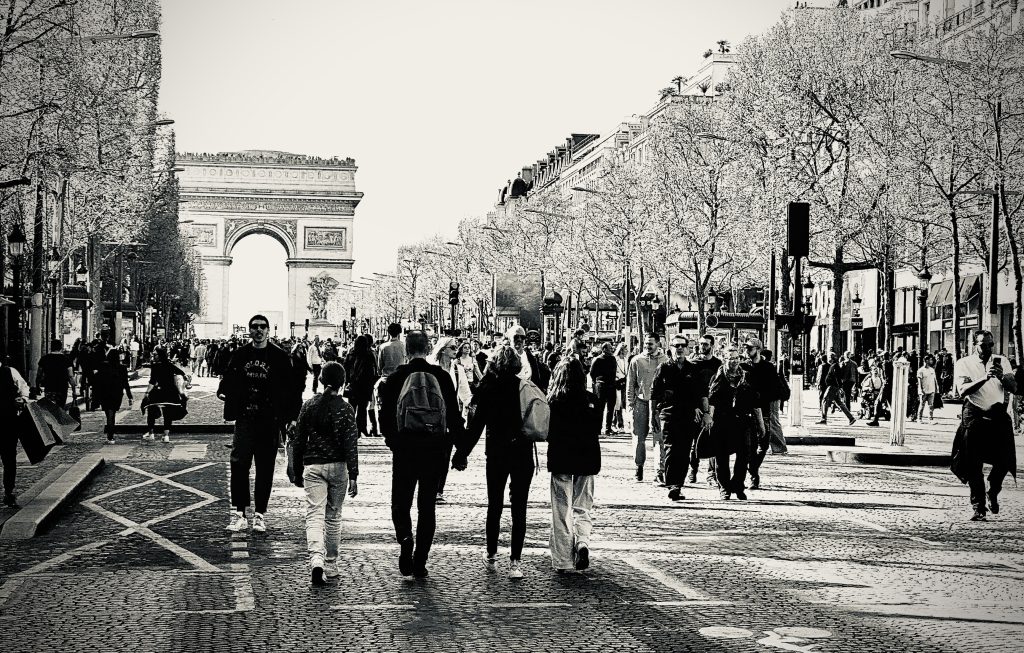
Click to view all photography from La Flaneur
Logistics being what they are, I first killed a week in Amsterdam and Switzerland with a Eurrail Pass, practicing flaneurship. Conversations while riding the rails are usually enlightening. Why does a Dutch watch expert en route to the world’s premier watch conference in Geneva not like my Walmart watch? And why does his mother not like him? Why are two Swiss girls speaking in English to each other instead of their lingua franca? Why does a young Turkish tech guy think the next elections will bring change? And, en route to Paris at last, a young, Algerian-born French life-coach educates clients (and me) about the root cause of all world problems (the patriarchy) as miles of lovely cows and ancient crumbling villages roll by outside train windows.
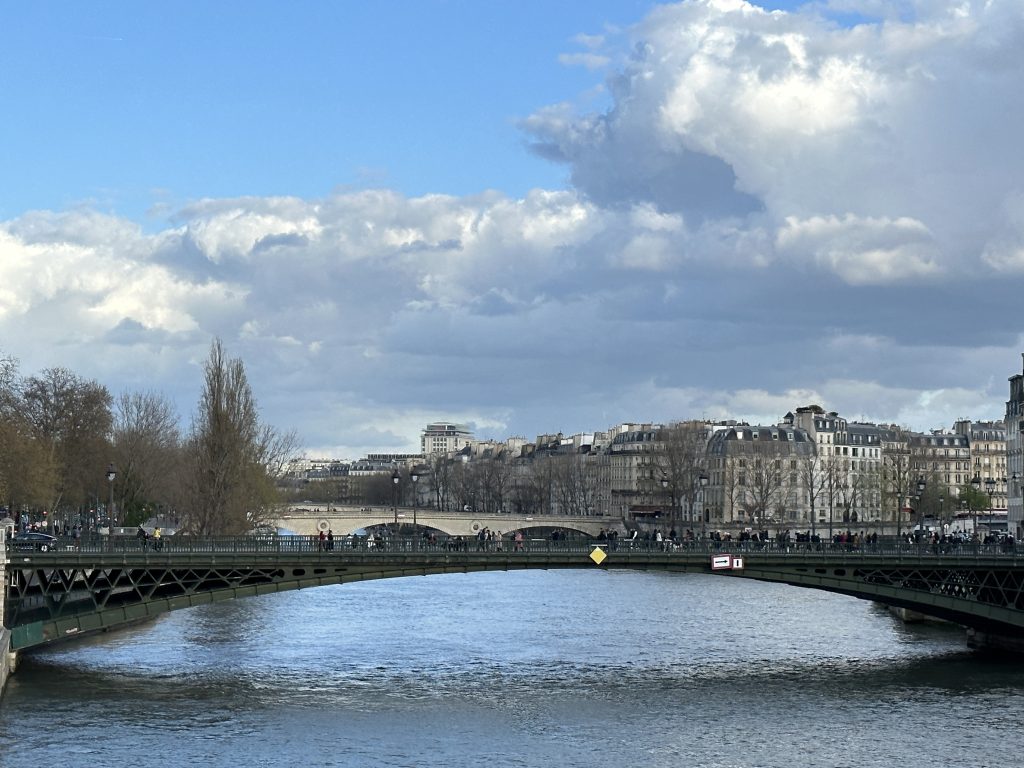
The apartment I share with my friend, is not far from the Arc de Triomphe, thus my mornings began by sallying forth from there, down the Champs-Elysees, through the Jardin de Tuileries, and across the Seine.
It’s good, as travelers, to recognize the fantasies underlying our journeys. Mine is pilgrimage, and of course, adventure. In tough times, I’ve entertained walking north in Norway until I freeze to death, or in better times, pilgrimaging across the whole of France on the The St. James Way, direction west. This would enable me to eat croissants and slip into ancient village cathedrals to pray for answers to life’s weightiest questions. Yet, at the end of my Paris flaneurship, I realize my fulfillment from walking. I’ve accomplished some slow travel, which allows me to both think about my life and escape it.
As a goal-oriented ex-ultramarathon runner, sauntering does not come naturally but I’m getting there—slowly. Maybe that’s why I travel: to try on other personas and places, test ourselves, hear new stories.
I’ve managed other trips to Paris without mastering the metro, so I give it a try with my friend. But as we head underground, rushing to get to the right place, I hear music–extraordinary otherworldly music, amplified underground. It is both cosmic and surreptitious and from the heart.
Five Ukrainians sing their country’s songs. And it feels like the beating heart of Europe. If only my tears, prayers, and small wad of cash could stop bullets, could stop genocide. I miss my train, but not my lesson in history and humanity.
Other times, I worked up my own small courage for lesser things, like walking into the Dior Store on the Champs Elysees, fantasizing about classic jackets. Flanks of bodyguards dressed in beautiful black suits eye my scruffy boots but let me in.
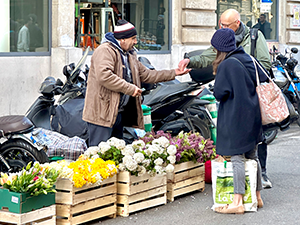

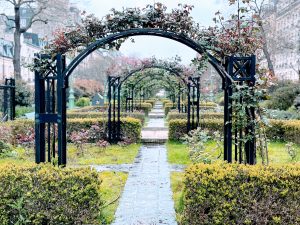
Click to view all photography from La Flaneur
Quelle surprise! They not only let me in, a sales associate spends half an hour educating me on my favorite subject: history, in this case, fashion history. When I mention rival Coco Chanel’s contribution to the post-war French economy, he states simply: “Chanel is about tradition; Dior is about audacity.” When I say that I’m going to the Dior museum exhibition that afternoon, he tells me to come back with a new eye and visit him again.
After getting lost, I am hungry and beat. I slide into a hundred-year-old bistro, the real thing with wavy old mirrors, leather banquettes and old-fashioned overhead hat racks. It is mid-afternoon and with the kitchen closed, I order deviled eggs and a slender glass of rosé wine—the perfect, beautifully plated lunch. Men in elegant suits linger from late lunches. I pretend to belong, yet feign invisibility.
Though I speak French, waiters often speak French better than me. The waiter speaks English with a Motor-City accent. Born in France, he moved to Detroit, became an alcoholic, returned to Paris to help aging parents. He has remained sober and working in this bistro ever since. Paris saved his life.
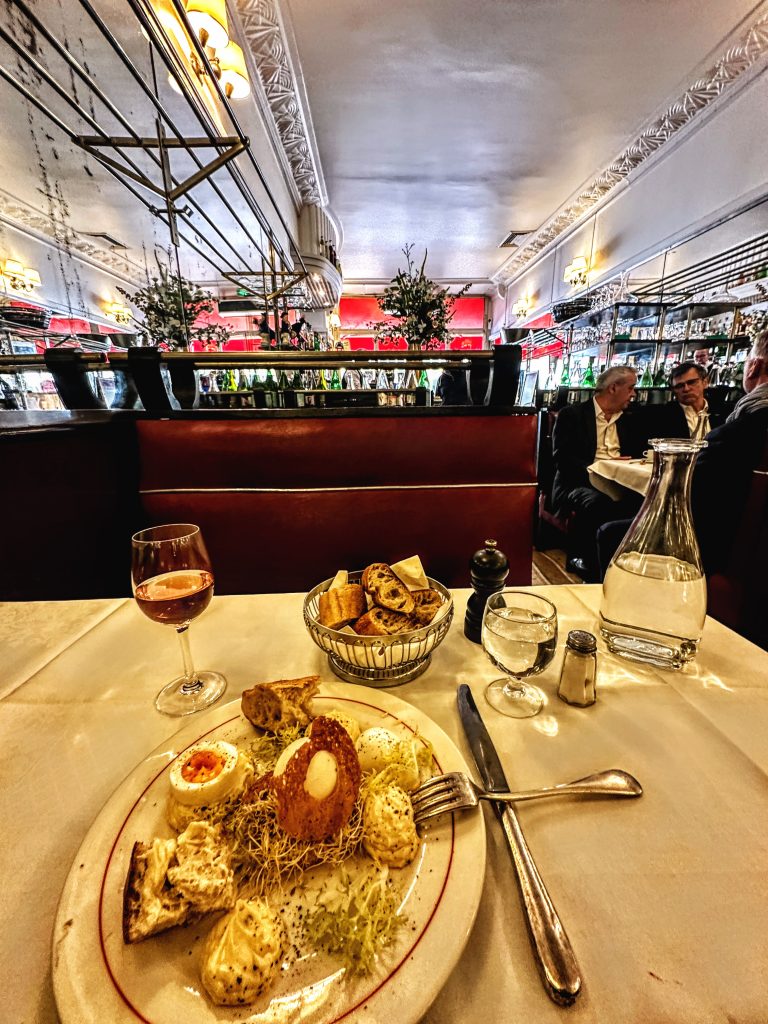
We all have our own battles to fight. Such stories are the buried treasure of any trip, and are best discovered by a sense of curiosity and ambling in accidental places.
Two days later, right around the corner by the luxe addresses of Rue Montaigne, demonstrators storm not the Bastille but picket the Louis Vuitton store, pointing out that the owner, at this moment the world’s richest man, might bankroll the governmental deficit, instead of the people.
And what is Vuitton selling but fantasy? In an age in which jet travel is hardly sustainable, we might be more thoughtful of our travel. How can our habits, wanderings, readings, and story-swapping help us reconsider our own cultures, our own fixations, and the speed of life which, if you are me, has always meant hurtling toward the next great adventure.
Walking, I see homeless tents tucked into tiny corners in secret gardens, watch working barges ply the Seine alongside tourist boats and I buy bottled water and roasted chestnuts from young Africans. I watch little kids play in parks. I see the confluence of the civilized and the wild in the Jardin de Tuileries. As I notice a huge, downed tree which is bronze, cast by a master sculptor. It is art imitating nature. I listen for birdsong, increasing throughout Paris. There’s even a red fox in Pere Lachaise cemetery amidst the graves of Jim Morrison and Edith Piaf. And the Seine in Paris, like the rivers in Amsterdam and New York, has grown cleaner over time. Wolves prowl in France’s Massif Central. Maybe next time…
Springtime at the Pueblo.
It begins in early morning with the races, proving that eternal renewal is here again, forcing us to adapt. There’s that soul-shaking clarity of light that lets us know we are, against all odds, still very much alive.

At first light, the runners begin. The rituals are past/present/future and not for me to question, explain or even to know about. Women appear on the rooftops of the mud buildings, as they always have, like bright butterflies in their colorful shawls, trilling like birds, in their high voices, urging runners on.
The men and boys are running, running, up and down the dirt track. The ancient mud building remain steady, rooted, behind the track. Runners appear this year as if on cue, their bodies painted with ochre and earth colors, wearing loincloths. Most are barefoot. There are small boys, too, one of whom is about four. He walks slowly along the dirt path after taking his turn, black hair hanging down his back. His skinny arms are no longer in motion; they appear stuck to his sides. His eyes stay straight ahead, the world’s smallest stoic. I glance up to the snowy peaks beyond, where we have skied all winter, the spring snowmelt now feeding the noisy swollen Rio Pueblo behind us. I hear the pounding of their feet on the track, running, running.
And yes, I can hear it again: The beating heart of our community lies here.
